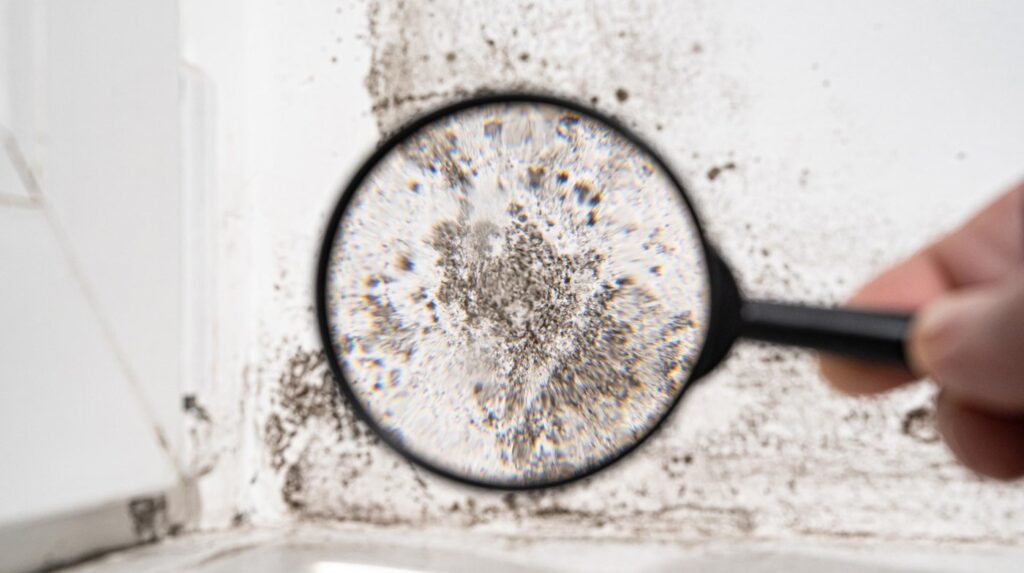
This column is the first in a two-part series on mold.
In 2000, a new panic swept the country — “toxic mold.”
Twenty-four years of lawsuits and untold billions of dollars later, major mold myths continue to frighten residents and cause exaggerated repairs and unnecessary conflict.
On one side of the debate is the mold industry: testers, consultants and mold clean-up contractors. On the other side are the federal and state governmental health agencies.
The mold industry has a major reason to fund advertising, while the government has little funding to distribute its information. This column and the next will address some of the misstatements misleading homeowners, HOA boards, and managers, because overreaction is expensive.
Mold is new: Mold, one of the earliest and simplest life forms, has existed for more than tens of thousands of years. Mold is ever-present, like dust or pollen, and only became a cause of fear in 2000.
Mainstream scientific research confirms mold’s many serious dangers: In 2004, the National Institute of Medicine published its comprehensive study on indoor mold exposure, in a book called “Damp Indoor Spaces and Health.”
The study’s central finding was: “Scientific evidence links mold … to asthma symptoms in some people with the chronic disorder, as well as to coughing, wheezing, and upper respiratory tract symptoms in otherwise healthy people…
However, the available evidence does not support an association between “mold and the wide range of other health complaints that have been ascribed.” That sounds like mold is no more dangerous to most people than dust or pollen. The book received little media attention – stories of frightened people living in tents are more interesting.
One must know what kind of mold it is: The mold industry typically describes some molds as worse than others.
Their star is stachybotrys chartarum, a black mold reported to produce infinitesimal quantities of a toxin similar to botulism. However, the scientific community long ago debunked the myth that mold was poisonous to breathe. For example, read the National Institute of Health Fact Sheet on Mold, the EPA site or the CDC site, which do not call out the most common household molds as toxic. The mold industry ignores all this and continues to call mold toxic.
California’s Toxic Mold Protection Act of 2001 created mold exposure standards: In 2001, a new Health and Safety Code 26100 instructed the California Department of Public Health (CDPH) to develop “Permissible Exposure Limits” regarding the various mold strains.
However, in 2005 and 2008, the CDPH reported to the legislature that the task could not be completed with the scientific information available. According to the CDPH, “To date, no federal or state policies set safe exposure limits or quantify the health risks from dampness and mold in buildings.” (CDPH Statement on Building Dampness, Mold, and Health, 2016 update).
Mold tests are important: The EPA and California DPH recommend against mold testing. The reason is simple. Per the CDPH, there is no standard as to how much of a given airborne mold is “unhealthy,” and indoor air sampling tests are extremely vulnerable to recent events in the home such as a recent shower, window opening, or carpet cleaning.
Mold tests mainly serve to unnecessarily frighten the home’s occupants with disembodied meaningless spore counts. There is rarely a legitimate reason to spend money on a mold test.
Next week, I’ll address more mold myths.
Kelly G. Richardson Esq., CCAL, is a Fellow of the College of Community Association Lawyers and a Partner of Richardson Ober LLP, a California law firm known for community association advice. Submit questions to Kelly@roattorneys.com.
Related Articles
HOA Homefront : Must our manager attend board meeting?
Is my HOA supposed to notify us in advance?
HOA Homefront: Our HOA has no board
HOA Homefront: New law restricts watering of HOAs ‘nonfunctional turf’
HOA Homefront: Reader wants to know, ‘Is my dog allowed?’
